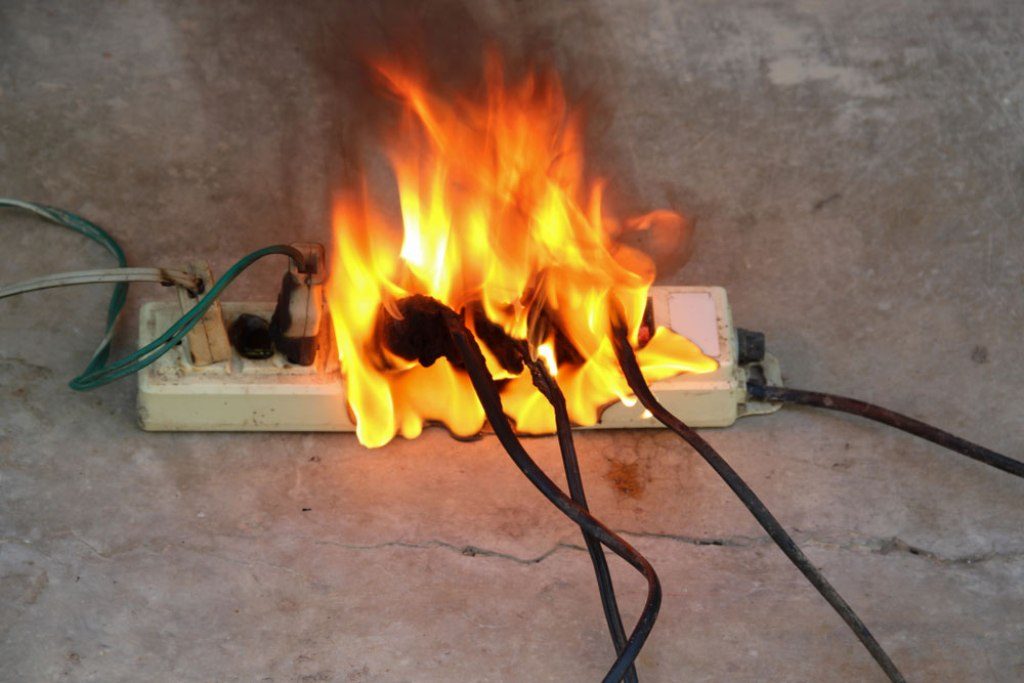With the rise of remote working, many Kiwis are using more electricity-dependent devices at home, often plugged into unattended multi-plugs, which can place a greater burden on switchboards and increase the risk of electrical fires

There are approximately 5,000 building fires in New Zealand every year, with about 1,000 being electricity-oriented. Arc faults are one of the most common causes of electrical fires and can occur in damaged cables, poor connections or old wiring. Schneider Electric has recently launched advanced AFDD tech which specifically protect against arc faults.
The new RCD-AFDD combination device offers all the benefits of standard circuit breakers (Miniature Circuit Breakers and Residual Current Devices) along with the added security of an arc fault detection device (AFDD) in one – meaning homes now have an ultimate solution for electricity malfunction detection, with personal and fire protection plus overload and short circuit protection all in one.
This device updates an earlier version that has been on the market since 2016 and allows homeowners to upgrade their distribution board with a system that provides maximum protection against electrical fire.
Designed to prevent electrical fires caused by dangerous electrical arcs in low voltage applications, Schneider Electric’s DIN mounted arc fault detection devices (AFDDs) are fully compliant with the IEC/EN 62606 international product standard for the operation of AFDDs.
When a harmful arc occurs the AFDD will trip and prevent dangerous consequences while simultaneously displaying a red indicator when a trip has occurred. The range has sophisticated waveform sensors that recognise the harmless electrical arcs that occur in electrical circuits to prevent nuisance tripping.
Schneider AFDDs are available in 6, 10, 16, 20 and 25 amp rated variations and along with an integrated RCD will protect against arc faults, short-circuit currents and overload currents. They work by detecting even small electrical arcs and simultaneously isolating the circuit and disconnecting power before the resulting heat starts a fire.
Schneider Electric’s AFDD Product Manager Martin Scottorn says, “The innovation behind the latest RCD-AFDD technology is designed to upgrade home safety with one simple, cost-effective and easily retrofitted product. It costs a few hundred dollars per unit compared to the cost of an MCB; however, compared with the cost of a full rewire of a home, or even the excess on an insurance policy, it can be a very good investment for a home owner, and a way to offer extra value to customers.
“Electricians are best placed to advise homeowners about installing RCD-AFDD devices into a distribution board and discussing with them which final sub-circuits they should protect, especially for homes with older wiring and distribution protection and where there is increasing demand on the electrical system.
“If an electrical issue is identified, the device lets you know what type of fault is on the circuit making identification simple and easy for both a home owner and an electrician. They are also very easy to install.
“As we are explaining to the market, AFDDs are a safety feature that pays for itself countless times over in terms of protecting property and people and detecting faults before they can potentially cause damage. They can also be helpful in older homes where house insurance has initially been refused because of the condition of the wiring; the use of AFDDs has been approved by insurers to mitigate the risk of electrical fire; and the addition of a new distribution board and AFDD on every final sub-circuit has been accepted by the insurer as a safe and much cheaper alternative to rewiring.”
Fact Sheet
- Designed to prevent electrical fires caused by dangerous electrical arcs in low voltage applications, Schneider Electric’s DIN mounted arc fault detection devices (AFDDs) are fully compliant with the IEC/EN 62606 international product standard for the operation of AFDDs.
- When a harmful arc occurs the AFDD will trip and prevent dangerous effects while simultaneously displaying a red indicator when a trip has occurred. The range has sophisticated waveform sensors that recognise the harmless electrical arcs that occur in electrical circuits to prevent nuisance tripping.
- Schneider AFDDs are available in 6, 10, 16, 20 and 25 amp rated variations and along with an integrated RCD will protect against arc faults, short-circuit currents and overload currents. They work by detecting even small electrical arcs and simultaneously isolating the circuit and disconnecting power before the resulting heat starts a fire.
- Schneider AFDDs can upgrade home safety with one simple, cost-effective and easily retrofitted product.
- In New Zealand, once the latest edition of the standard is cited into the electrical regulations the use of AFDDs will be made a requirement on all final subcircuits having a rating not exceeding 20A certain installations*:
- Sleeping accommodations: e.g. bedrooms (in residential), hotels, nursing home
- Locations with risks of fire due to the nature of processed or stored materials: e.g. barns, wood-working shops, stores of combustible materials
- Locations with combustible constructional materials: e.g. wooden buildings
- Fire propagating structures: e.g. high rise buildings
- Locations with endangering of irreplaceable goods: e.g. museums
- The AFDD shall be installed at the origin of the final circuit to be protected.*
- The different types of Electrical Arc Faults:
- Series Arc Fault
Occurs between two parts of the same conductor or a loose connection, when the conductor is damaged. A hotspot forms and carbonizes the insulation.
- Parallel Arc Fault
Almost like a short circuit, a Parallel Arc Fault occurs between 2 live conductors (the phase and neutral) when the insulations between both are damaged and electricity passes through the shortest path. The current flow increases dramatically and a hotspot forms and carbonizes the insulation
- Earth Arc Fault
A different type of Parallel Arc Fault, these occur between a live conductor and the ground path.
*Disclaimer: this is not intended as comprehensive advice; readers should refer to AS/NZS 3000:2018 for actual wording and requirement.

